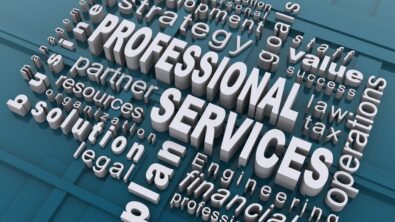Journey to Recurring Revenue Series Part I: Adaptability is the new collateral

Boy, we saw a lot of changes this year! Which path did you take? What changes did you make and how are you leveraging them to make your business more relevant? In today’s business landscape, it will serve you best to be adaptable.
Your adaptability quotient
According to the e-book ADAPT or DIE published by Forbes Books, “Your Adaptability Quotient (AQ) is a key determinant of your business success.” It is the ability to adjust course, product, service and strategy in response to the unanticipated changes in the market.” The word adaptability itself comes from the word apptissimus or adaptico meaning “to fit, to fit in, to mold yourself”, and that is exactly what businesses need to do now. I am not recommending that you adapt to just ‘fit in or mold’ your business to today; I am stating that it is imperative and the minimum move to stay relevant.
Stay relevant. Don’t become extinct
Do not become blind due to your past or current successes and so stuck in your thinking and processes that you will not be able to adjust quickly and swiftly, let alone think differently. I’m guessing you do not want to become the next Blockbuster® or Kodak®. They were leading giants in their time. Now, where are they? Exactly my point. The same e-book talks about these companies and others as becoming “perils of their success and their consequent failure to innovate.”

When Reed Hastings of Netflix fame approached John Antioco, Blockbuster CEO, to propose that Netflix run their brand online, Antioco and his team laughed at him. Antioco basically told him: “I have millions of existing customers and thousands of successful stores. I need to focus on where the money is.” Blockbuster started to adapt in 2004 when they launched their own subscription services, but it was too late. Hastings admitted that if Blockbuster would have launched their service just two years earlier, Netflix would probably be out of business today. The lesson of not being adaptable early was a hard one for Blockbuster as they filed for bankruptcy in 2010. Blockbuster did not have a culture of adaptability.
Take two minutes to understand your level of adaptability before proceeding to the next section.
Adaptability culture
Adapt today and plan for the future by creating an adaptable leadership and company culture. The story above evokes the importance of not only acting but acting quickly. Being a proactive, adaptable business leader rather than a reactive one is setting your company up for the future. Adaptability, as characterized by Harvard Business Review, is the new competitive advantage and is described by Fast Company as the future of work.
In the blog written by our global enablement lead, Jason Watkins, the topic is partner business planning and execution. Watkins says, “Now is the time to effect change and transformation. Right now.” He explains the benefits of digitalizing the business planning and execution process to enable live, continual review and responsiveness to the data.
However, if your leadership AQ is low, you may react with a traditional approach. For those of you with a high AQ, you may react very differently to the data. For example, would you have ever thought restaurants would offer subscriptions for their food? It’s true and that is some very different type of thinking to think you can acquire repeat customers, very different from the traditional gift card idea. Gift card runs out and so do the people. Subscriptions for the cost food each month brings people and their friends in the door over and over again.
In the Ted Talk delivered by the vice president of Early Stage Practice at Silicon Valley Bank, Natalie Fratto, she shares with the audience that AQ is one of the key characteristics and skills she looks for when deciding to back an entrepreneur in a new venture. Why? Because she understands that in today’s business landscape, good ideas and talent are great, but the ability to have an adaptable mindset and related skills is even more important.
Three ways Fratto looks for adaptability in someone:
- Eliminate the “what did you do when” questions and instead replaces them with “what if” questions, such as “What if your revenue stream for xxx dried up?”
- Practicing simulation is safe testing ground for improving adaptability
- Instead of taking in and retaining information (IQ), AQ tests how you manipulate the information and the given constraints to achieve goals
- Look for signs of unlearning – challenge to presume what s/he already know
- Look for people who infuse exploration into their life
Fratto also advises to never fall in love with your wins – seek out what might kill you next and prioritize exploration over exploitation.
A contributor to the e-book from Harvard Business Review says, “Competitive reality is uncertain. What remains certain is the indispensability of a high AQ in the fight to keep pace with the changing environment. The more your company, employees, style of training and strategy sessions are oriented in a way that promotes a warm response to change, the higher likelihood our company will weather the storms of the Digital Revolution.”
Infuse adaptability into your business planning
It is a new fiscal year here at Siemens Digital Industry Software and business planning is kicking off with a new digital Partner Planning & Execution management system. I encourage you to challenge yourself and your team to think out of the box and identify, ask and simulate responses to those ‘What if’ questions during your business planning cycle. This may sound like traditional risk management at the business level, but it goes beyond that. Risk management is typically about those ‘known’ risks that may or may not occur, rating them and identifying a mitigation plan if they do occur.
Adaptability is to foster a culture which enables your team to extend beyond tradition and identify the potential unknowns and be able to swiftly respond if, and when they occur. You have already overcome many challenges this this year with COVID and its impacts. Some of you better than others due to your ability to very quickly adapt. For FY21:
- Do you need to make further adjustments due to COVID? “What if” downstream you experience unintended impacts?
- What changes do you need to make to your sales, marketing and resource and enablement plans to accommodate a new recurring revenue stream?
- Are you going to target a different industry?
- Are you adding service offerings to your portfolio?
- What are your unkowns?
Have some fun with your business planning process and incorporate some “what if” sessions.
For those of you who participate in our ELEVATE program, you will remember the Strategyzer’s business model canvas as a simple and inclusive way to do business planning at a company level as well as for each organization or department to ensure alignment and strategic depth of the plan(s).
We are committed to working with and enabling our partners through their journey to incorporate a recurring revenue business model into their business with the understanding that a separate business strategy and plan is required for the recurring revenue portion of the business.
In a future blog, we will dig a bit deeper into how to leverage the business model canvas to identify the value your customers need and how you can use the business model canvas process and template to identify how your team will meet those needs and what it will take to do so.
Christine Carter is the Global Director for Solution Partner Services & Support Enablement and has been in the PLM business for over 30 years leading projects for enterprise customers focusing on cross-organizational business process solutions and adoption management. In addition to services and support, Chris is the initiative leader for Siemens Solution Partners’ Journey


